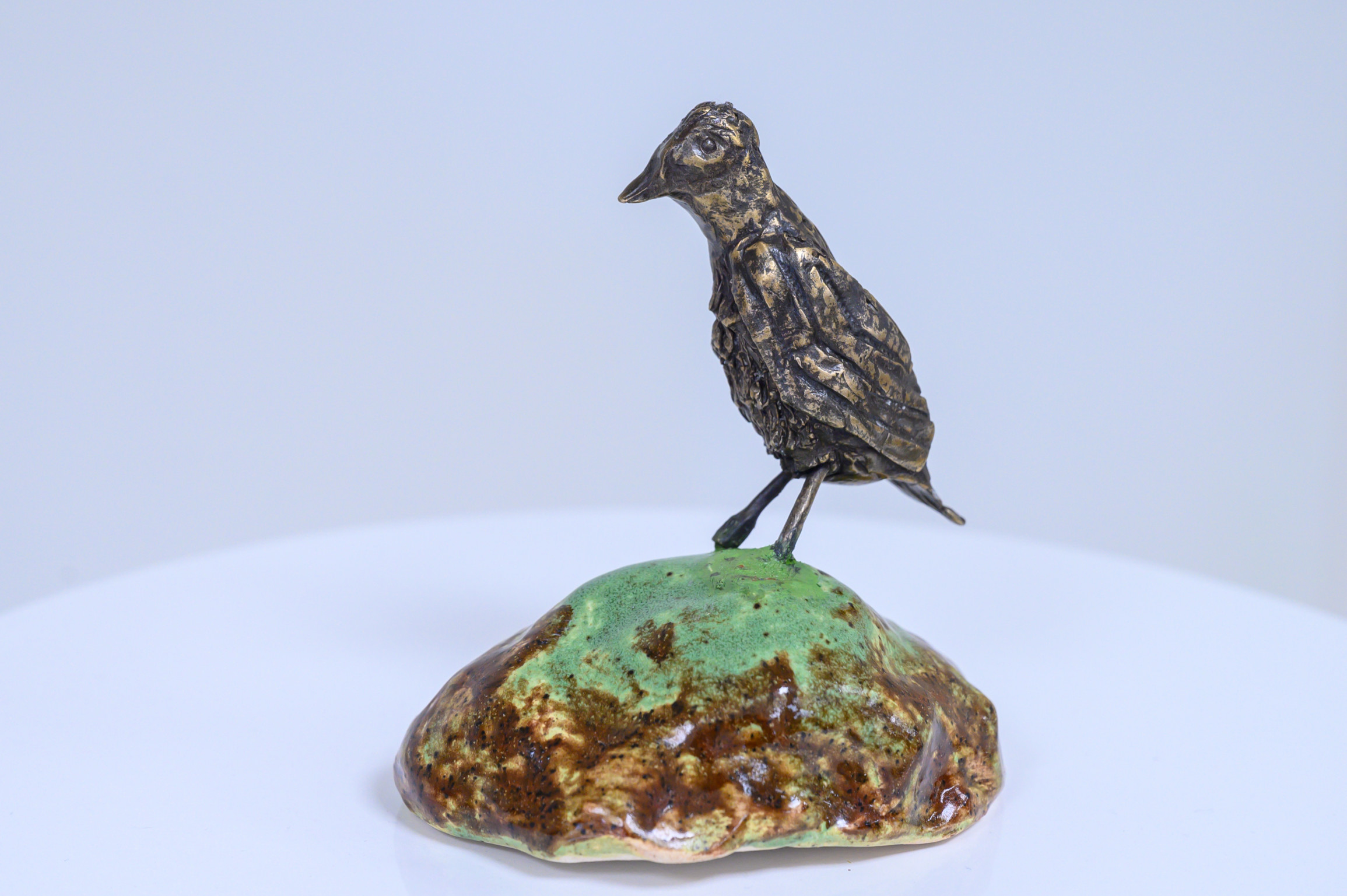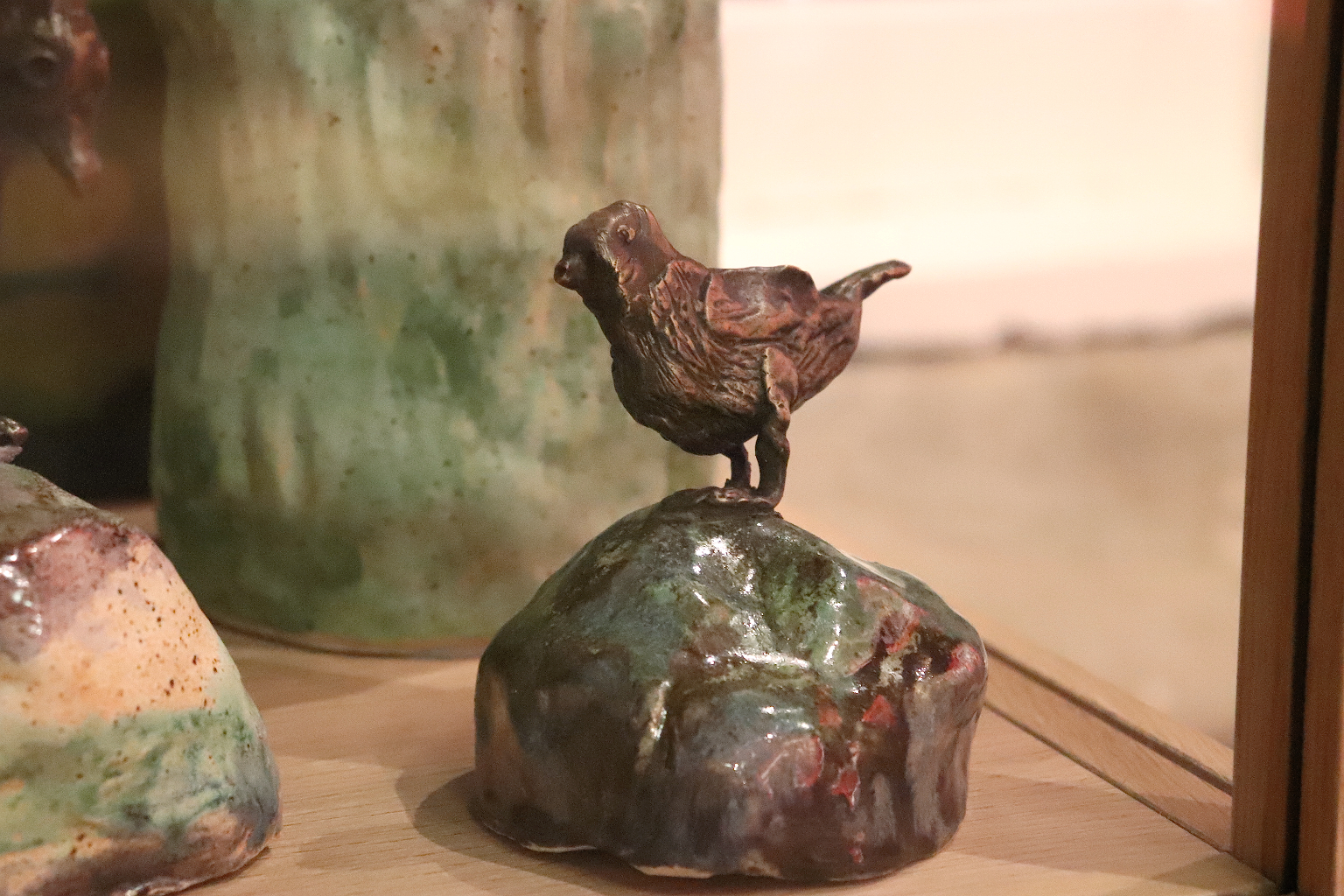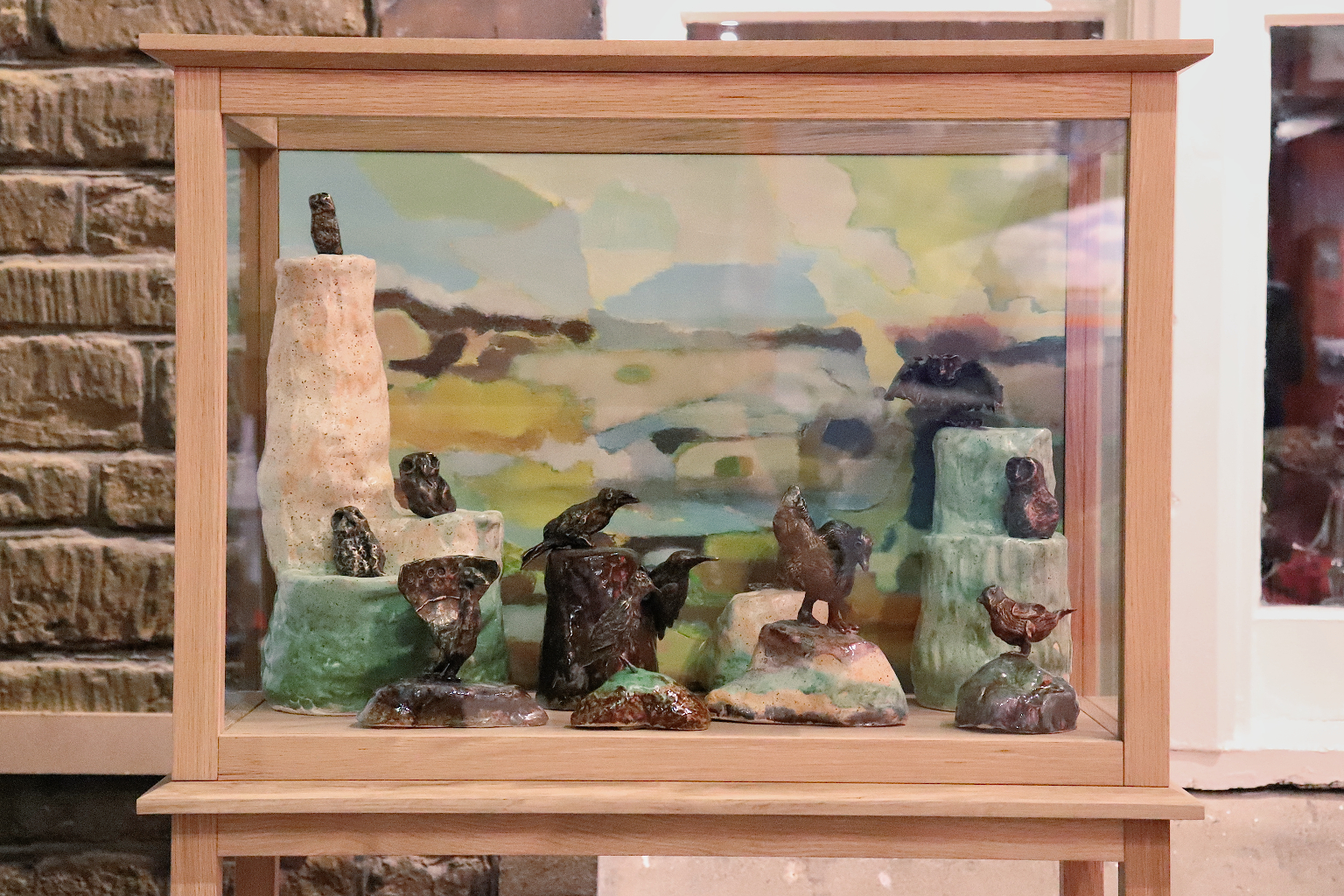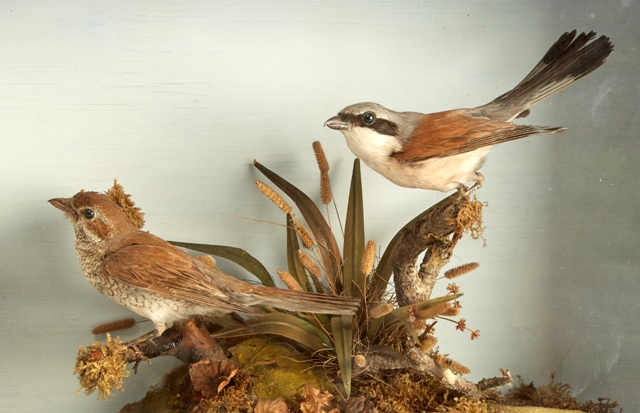Juneau Projects – Shoreline, Skyline, Treetop Messenger
Juneau Projects – Shoreline, Skyline, Treetop Messenger
Invisible Dust, in collaboration with Humber Museums Partnership commissioned Juneau Projects to develop ‘Shoreline, Skyline, Treetop Messenger’ – a work inspired by North Lincolnshire Museum’s natural history collection, focussing specifically on its collection of mounted bird specimens- as part of the ‘Surroundings’ project.
The artists worked with scientists Tim Birkhead, FRS, Dr Nicola Hemmings and Lucas Mander to explore historic and contemporary bird populations in the local area, and issues causing species decline. They also brought together the local community during the UK’s Covid-19 lock-down in summer 2020, by means of workshops which took place on Zoom where Juneau Projects tutored participants in painting, papercutting, lino printing and wax modelling. The resulting illustrations were brought together to form a book, accompanying writings from collaborating scientists and participants’ wax models were cast in bronze for the final artwork that takes the form of a display cabinet similar to those housing the taxidermy bird collection. The bronze birds are displayed in the cabinet in front of a painted diorama, on specially created ceramic perches. These two elements – the artists’ book and the installation form the work: ‘Shoreline, Skyline, Treetop Messenger’ which joins the historic bird collection at North Lincolnshire Museum.
“Bringing together interdisciplinary groups seems inherent to the ethos of the project, propagating a local ecological awareness that is crucial to changing the lens through which we see our habitat.” – Jay Drinkall
Read the recent Corridor8 Review of the programme
The wax models made by the public have been cast in bronze using the intricate lost-wax technique, whereby the original wax sculpting melts and runs out during kiln firing. The melted wax can be recovered and reused, although it is often simply burned up, all that remains of the original artwork is the negative space formerly occupied by the wax, inside a hardened ceramic shell ready to receive the molten bronze. As with the process of creating these sculptures, as the original waxwork is lost to be immortalised in bronze, our native species of birds are being lost to only be immortalized by taxidermy displays in our natural history museums.
“We have enjoyed developing our collaborative working method for this project to deliver practical hands-on workshops via remote, digital means, during the Covid restrictions. This link between the hand made and technology has always been a key part of our work and is brought into sharp relief in this project.” – Phillip Duckworth, Juneau Projects
The local Humber Estuary has international significance for birds and is a focus of Hull University ecologist Lucas Mander’s work. The estuary’s vast wetlands are an important stopover site along the East Atlantic Flyway – a migratory route taken by tens of millions of birds each year as they travel between breeding grounds in the arctic and northern Europe to warmer wintering areas in western Europe and western Africa.
-

Photography – Nick Harrison -

-

“There is a species in the collection that is virtually extinct as a breeder from the UK: the Red-backed Shrike. There are a few species which have declined sharply in the UK e.g. Curlew, Lapwing, Cuckoo, Corncrake and Hen harrier. Whilst there are species from the collection that are now more common e.g. Avocet, most UK breeding bird species are declining due the combined pressures of habitat loss, fragmentation and deterioration. For the red-backed shrike, it seems to be a combination of an adverse climatic trend, the fragmentation of its habitat, and over-collecting of its eggs.” – Lucas Mander
Juneau Projects collaborate with people to produce artworks. Here the people have included bird scientists, members of a young curators’ group, and workshop participants from the local area. Often this process gently raises particular issues around nature and technology almost imperceptibly, while hands are busy doing something else, be that drawing, printing or sculpting. Shoreline, Skyline, Treetop Messenger is a permanent testament to those moments of thinking while doing, and places the historic bird collection in the context of urgent contemporary issues around biodiversity.
The display is open to the public at North Lincolnshire Museum, to pre-book free general entry tickets to the museum visit their Eventbrite: alternatively, call the Museum on 01724 297055.
Booking link: https://www.eventbrite.co.uk/e/booking-entrance-slots-for-nlm-tickets-111665705130
In-Conversation – Juneau Projects and bird Scientist Nicola Hemmings discuss ‘Shoreline, Skyline, Treetop Messenger’.
Watch the recording from the live launch of the project including an in-conversation discussion with the artists.
Common Ground: Young Curators Programme
Alongside ‘Shoreline, Skyline, Treetop Messenger’ is a Young Curator’s Programme, Common Ground. This curatorial collective of six young curators was formed to create a project to run alongside the work by Juneau projects, also taking as inspiration North Lincolnshire Museum’s bird collection and contemporary issues around biodiversity.
Common Ground’s young curators have been participating in an online summer school, with input from curators and arts professionals to develop curating and project management skills, alongside networking trips and research, with support and mentoring, to enable them to develop their own project.
In light of current restrictions surrounding Covid-19, they aim to find ways to exhibit work where individuals are not restricted to grouping together in one place and can move around, taking in the project at their own pace in an environment relevant to the artworks.
Common Ground is looking to bring together artists to take part in an art trail around North Lincolnshire. The trail will have several locations, each site an individual display of artworks. The aim is to communicate issues of climate-change and human impact on biodiversity in bird populations.
As visitors move through the trail they will virtually, or physically ‘collect’ each artwork, encouraging everyone to try and see each location and thereby complete the exhibition. The trail will also exist online to allow for fully accessible participation, particularly during the pandemic.
About Surroundings:
‘Surroundings’ is produced by the Humber Museums Partnership (HMP), Hull, East Riding and North Lincolnshire in partnership with Invisible Dust. Launched in 2017 – the year of Hull City of Culture – the programme includes international public art commissions with an environmental theme, a young curator’s project, residencies and exhibitions. Each year has a different but interrelating theme – Food, Migration and Biodiversity and Landscape respectively. It is funded by Arts Council England through Ambitions for Excellence and Wellcome Trust Sustaining Excellence.

